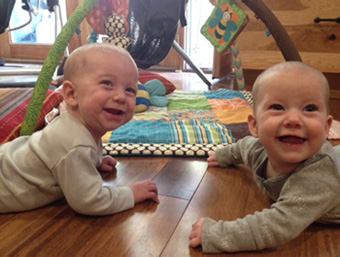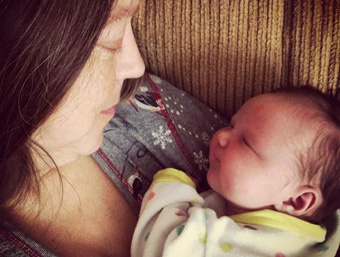The best tubal ligation procedures for reversal are those procedures that damage the smallest part of the fallopian tubes.

The advantages to tubal reversal, especially over the alternative treatment of in-vitro fertilization (IVF) are multiple:
- Chances of pregnancy are higher after reversal than with IVF
- Reversal is more affordable than IVF
- Reversal allows you the chance to become pregnant more than once
When you have reversal surgery with Dr. Monteith of A Personal Choice in Raleigh, North Carolina about 2 out of every 3 of his patients will become pregnant.
On average the chance of pregnancy after one cycle of IVF is about 1 out of every 3 tries. You can easily see your chances of pregnancy are much better with reversal surgery.
Although all tubal ligations can be reversed, the best tubal ligation procedures for reversal are those procedures that damage the least amount of fallopian tubes. Reversal of these ideal tubal ligation procedures can provide you with up to an 80% chance of pregnancy,
Best Tubal Ligation Procedures For Reversal?
Hands down the best tubal ligation procedures for reversal are tubal ligation procedures done with fallopian tube clips and fallopian tube rings.
Some tying and cutting tubal ligations and some burning procedures can be ideal for reversal as well….so don’t lose hope if you have had tying, cutting, or burning.
Tubal clips and tubal rings are ideal for reversal because these methods do not damage a large section of tube. These methods are less dependent on the doctor. To some extent these methods protect you from a doctor’s tendency to be excessive with removing large amounts of tube.
Although there are two types of tubal clips…both types of clips damage very small sections of the tubes. Women who have reversal of these methods usually have the longest and healthiest tubes after reversal surgery. The actual devices damage the smallest amount of tube possible. These methods are less reliant on the doctor.
Tubal rings actual damage a larger amount compared to tubal clips…but just slightly more tube and not enough to make a big difference.
Usually the doctor will place one fallopian tube clip or one fallopian tube ring on each tube.
In comparison, if a doctor cuts and ties a tube…or burns a tube…some doctors may tie or burn excessive amounts.
Tubal clips and tubal rings are both methods that MINIMIZE and even PREVENT the doctor from doing too much damage. Now if a doctor puts multiple clips or rings on the tubes….then they can do excessive damage…but in general most doctors will not put on multiple clips or rings.
Tubal Clips: Excellent Method For Reversal
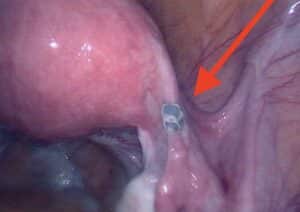
Tubal clips
There are only two type of tubal clips: Filshie clips and Hulka clips.
Fallopian tube clips are usually placed during a laparoscopic procedure but occasionally clips can be put directly on your tubes during a C-section.
Filshie clips are made of titanium with an inner silastic (plastic) lining. Filshie clips easily show up on x-ray imaging or MRI.
Hulka clips are plastic clips surrounded on the outside with a gold band. Hulka clips can easily be seen on an MRI but are harder to see on x-ray or ultrasound. Hulka clips are placed across the fallopian tubes during a laparoscopic tubal ligation procedures.
Usually one clip is used for each tube. The clips only damage a very small portion of each tube.
The tubal clips cause severe pressure necrosis on the tissue underneath the clip. This pressure causes that small portion of the tube to lose blood supply. This tissue dies and get absorbed by the body. The tubal ends heal closed and pull apart within several weeks of the clips being placed. This causes the tube to permanently heal closed and prevent the egg and sperm from uniting.
The tubal clips are not serving any function after the tube heals closed. Some people mistakenly believe if the tubal clips are simply removed then you will restore your ability to become pregnant. This is a mistaken notion because once the clips are place on the tubes….the tubes are permanently healed shut.
The remaining tubal lengths are usually long and healthy after a tubal clip tubal ligation.
Either of these two types of tubal clips (Filshie or Hulka) are great for reversing and the chance of pregnancy could be 80% to 90%.
Fallopian Tube Rings: Another Great Method For Reversing
Fallopian tube rings are only placed during laparoscopic procedures. Tubal rings are almost never placed at the time of C-section. Tubal ring procedures are done well after pregnancy has ended…or at any time if you have never been pregnant.
There is only one type of tubal ring. These rings are called many different names: Falope rings, Yoon rings, tubal rings, tubal bands, etc. Some people even call them ‘rubber bands’……but even though the names are different all the names identify the same type of tubal ring.
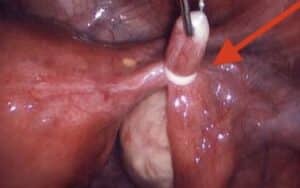
Tubal rings
During tubal ring tubal ligation method a small rubber ring is placed around a small section of the middle of each tube. Tubal rings cannot be seen on x-ray , MRI, CT scan, or ultrasound.
Just like the tubal clips, tubal rings cause severe pressure on the tissue trapped inside the ring. This pressure causes the small trapped tissue to lose blood supply.
This tissue dies and gets absorbed by the body. The tubal ends soon heal closed and pull apart. The tubal ring does not serving any function after the tube heals closed. The remaining tubal lengths are usually long and healthy after a tubal clip tubal ligation.
Some people think the tubal rings actually function like putting a rubber band on a plastic bag…you remove the rubber band and the bag opens! Unfortunately, the tubal rings causes permanent blockage. The rubber bands must be removed. The closed ends of the tubes must be opened and the tubes rejoined using microsurgery.
Tubal rings…just like tubal clips are an excellent type of tubal ligation to reverse because the ring does not damage that much tube. Since the tubal rings are a standard size most tubal ring procedure damage a small section of tube and the condition of the tubes at the time of reversal are usually pretty good. The fallopian tube is healthier and usually longer after reversal of tubal rings.
The chance of pregnancy after reversal of a tubal ring type tubal ligation is about 80% to 90%.
Burning Tubal Ligation: But Only In Small Amounts!
Although most people dont think tubal burning as one of the best tubal ligation procedures for reversal… it can be!
Tubal burning sounds bad…it sounds like the doctor just torches your tubes until they are crispy and black….just like when you over cook a steak. Tubal burning does not have to be bad.
The problem with tubal burning is not the method…it is usually the doctor. Some doctors burn a small amount and some doctors burn a large amount. If doctors burn a very small amount of tube and if they burn exactly in the middle of the tube then this can be an excellent type of tubal ligation to reverse with a great chance of pregnancy.
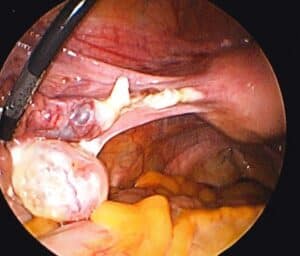
Tubal burning
Unlike tubal clips and rings, you cannot tell how much of the tube was actually burned until the time of reversal surgery. You may be able to get a hint by requesting and reviewing the tubal ligation operative note but usually the operative notes from a tubal burning procedure are not detailed enough to let you know if a small or large amount of tube was burned.
Usually the notes say something like this ‘a small section of each tube was burned on each side’. The problem with these notes is that everyone, including doctors, has a different definition of what small means!
The only way you can tell with certainty if a burned tubal ligation damaged a small amount of tube is with a screening laparoscopy.
More information: Screening laparoscopy
During a screening laparoscopy, the doctor inserts a small camera inside your belly button to look directly at your tubes. If the tubes are repairable then reversal will happen at the same time. If the tubes are not repairable then the camera will be removed and you can then consider in-vitro fertilization (IVF).
Dr. Monteith is the only reversal surgeon that offers laparoscopy and a refund of the surgical fee if the tubes cannot be repaired.
Tying And Cutting: But Only Less Than 1.5 cm!
Tying and cutting is usually never thought of as one of the best tubal ligation procedures for reversal… but it certainly can be. Again…as we have said before … what you do to the tubes is not important as how much you do to each tube!
During a tying and cutting procedure (also known as ligation and resection), the doctor ties a piece of the fallopian tube and then cuts out that piece. If they tie off a large piece…then they will cut out a large piece! If they tie off a small piece, then they usually only cut out a small piece of tube.
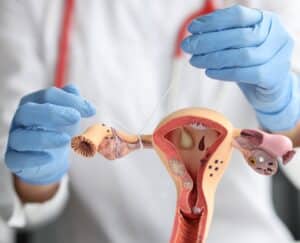
Tubal tying
The fallopian tubes are usually 8 to 10 cm long. Most doctors remove 1 to 3 cm from each tube. If a doctor removes 1.5 cm or even less from each tube then you could have one of the best tubal ligations procedures for reversal!
The only way to know for sure is to request a copy of your tubal ligation operative report but you also need the pathology report.
The tubal ligation operative reports are usually vague…they will say ‘small section of tube tied off on each side’ ….or they could say ‘4 cm of tube tied off on each side’.
The problem with these notes is that doctors, like everyone else, are terrible at estimating length…and just because a doctor says small does not necessarily mean that it really was small.
The pathology reports are God sends because the pathology report is a documented report on the actual measurement of the tubal segment that was removed! If the operative note says a section of tube was removed but the path report says the tissue removed was 1.0cm….then you had a very small section of your tubes removed and you do indeed have one of the best tubal ligation procedures for reversal.
Best Candidates For Reversal
The best candidates for tubal reversal are those who have tubal clips and tubal rings. If you have burning of a SMALL amount and tying and cutting of a SMALL amount then you could also be considered a good candidate.
If you would like to know what the steps are to determine if you are a good candidate then we encourage you to watch this video:
You are welcome to send your operative and pathology reports to Dr. Monteith for a free review. His staff will easily let you know if you are candidate for tubal reversal.
For more information on how to send your records: Sending records to be considered for tubal reversal surgery
Do You Think You Had A Bad Tubal Ligation?
If you have read the above and think your tubal ligation falls into the lease favorable types of tubal ligations for reversal then you should watch the video below for more inspiration that almost all tubal ligations can be reversed.
If you are uncertain about all this… and just want to talk to someone… then call Dr. Monteith’s office (919) 977-5050 to speak with a staff person about your options.

